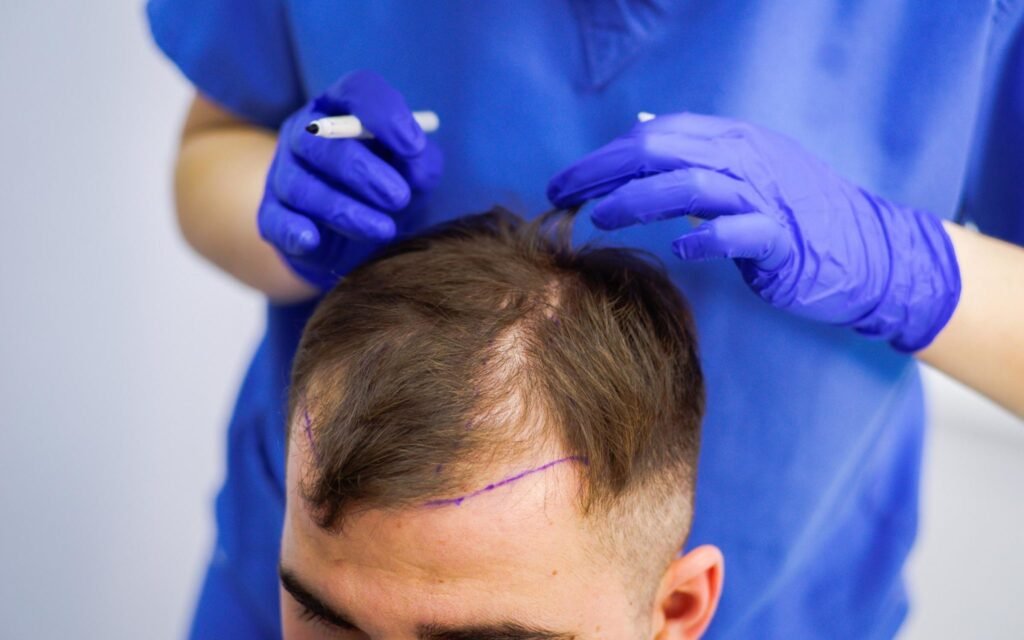Hair transplant procedures are increasingly popular among people looking to restore hair and regain confidence. However, not every hair type is equally suited for transplantation. While hair transplants are generally effective, certain hair types yield better, more natural results. In this blog, we’ll dive into the best hair types for transplants, the factors that influence suitability, and how your unique hair characteristics can impact your results.
Understanding Hair Characteristics and Transplant Suitability
Several factors affect how well a hair transplant will take and how natural it will look. These include the texture, thickness, curl pattern, and color of your hair. A person with thick, coarse hair, for example, will likely have a different outcome compared to someone with fine, straight hair. Let’s explore these traits in more detail:
- Hair Thickness and Density: People with thicker hair strands and higher hair density generally achieve better results. Dense hair gives more volume, which can better conceal thinning areas.
- Curl Pattern: Curly or wavy hair often provides more coverage with fewer grafts. Due to the curl, this hair type covers the scalp more effectively, creating the appearance of fuller hair.
- Hair Color and Skin Tone: The contrast between your hair color and skin tone also affects the results. If there’s little contrast, like dark hair on a dark scalp, it may appear denser and more natural.
Each of these traits contributes to the success and aesthetic outcome of a hair transplant, with some hair types consistently providing better results than others.
The Role of Hair Type in Transplant Success
When determining suitability for a hair transplant, specialists examine the donor area’s hair type and quality. Typically, hair is extracted from the back and sides of the scalp, where it is usually more resistant to hair loss. Here’s a look at how different hair types fare in transplantation:
1. Thick and Coarse Hair
Thick and coarse hair is one of the best types for hair transplantation. It not only provides better scalp coverage but also appears denser. Since the diameter of each hair strand is larger, it requires fewer grafts to achieve a full appearance.
2. Curly and Wavy Hair
Curly and wavy hair types are excellent for transplants because they create an illusion of more density. The curls provide natural volume, and when implanted, they help conceal areas that may otherwise appear thin. Many patients with curly or wavy hair achieve satisfying results with fewer grafts, making this hair type cost-effective for those considering a hair transplant in Islamabad.
3. Straight Hair
While straight hair can still yield good results, it often requires more grafts to achieve similar density compared to curly or coarse hair types. Straight hair lies flat on the scalp, meaning any thinning may be more noticeable unless there’s a high density. However, people with thicker, straight hair strands can still achieve effective coverage and natural-looking results.
Hair Density and Its Impact on Results
Hair density in the donor area is a critical factor in transplant success. People with high-density donor areas are prime candidates for hair transplants because they can donate more hair without significantly impacting the appearance of their donor site. Additionally, high-density hair helps cover balding areas more effectively after transplantation.
Low-density hair, on the other hand, may limit the number of grafts available. In these cases, surgeons might recommend other solutions, like combining a transplant with non-surgical treatments, to achieve the desired look.
Importance of Donor Hair Quality
The success of a transplant heavily depends on the quality of hair in the donor area. Hair from the back and sides of the scalp is usually more resilient and resistant to thinning. High-quality donor hair, regardless of type, will often yield better, longer-lasting results. Conversely, poor-quality donor hair can limit the outcome of the transplant.
What Hair Types Face Challenges in Transplants?
While many hair types are suitable for transplants, there are certain types that may present challenges:
- Fine Hair: People with very fine hair may find it challenging to achieve the same density as those with thicker hair strands. However, a skilled surgeon can still produce a satisfactory outcome by strategically placing grafts to maximize coverage.
- Light Hair on Light Scalp: Hair color also plays a role. If the contrast between your hair color and scalp is minimal, like blonde hair on a fair scalp, it may require more grafts to achieve the appearance of fullness.
For those facing these challenges, consultation with a reputable clinic can provide options and insight into how their unique hair characteristics may impact the process.
Choosing a Clinic for Your Hair Type
Not all clinics offer the same level of expertise when it comes to handling different hair types. It’s essential to select a clinic experienced in treating various hair types and textures, as a highly skilled specialist can adapt the procedure to best suit your unique hair characteristics. Clinics with experienced surgeons can maximize your outcome regardless of your hair type, ensuring you get the most natural-looking results possible.
Preparing for Your Hair Transplant
To increase the likelihood of a successful hair transplant, follow any pre-procedure guidelines provided by your clinic. These may include recommendations on diet, avoiding certain medications, and caring for your scalp. Proper preparation can enhance graft survival rates and improve healing time.
Post-Transplant Care for Optimal Results
Caring for your hair and scalp after a transplant is essential. Your doctor will likely advise you to avoid vigorous activities, direct sunlight, and certain hair products initially. Adhering to post-op care instructions helps grafts take root and encourages optimal growth.
Most patients begin to see visible results within three to six months, with full results evident after a year. During this period, continue following your clinic’s guidance and attend any follow-up appointments to ensure your transplant progresses smoothly.
Conclusion
Understanding which hair types yield the best transplant results can help set realistic expectations and aid in decision-making. Thick, coarse hair and curly or wavy hair types generally provide the best coverage and aesthetic outcomes, while finer and straight hair may require more careful graft placement and density to achieve similar results.
For those considering a transplant, working with a trusted and experienced clinic is vital. If you’re in Islamabad and exploring options, Royal Cosmetic Surgery Clinic PK offers comprehensive consultations and specialized care for a variety of hair types. A consultation with their skilled team can help determine the best approach to meet your unique hair restoration goals and achieve a fuller, natural-looking result.




